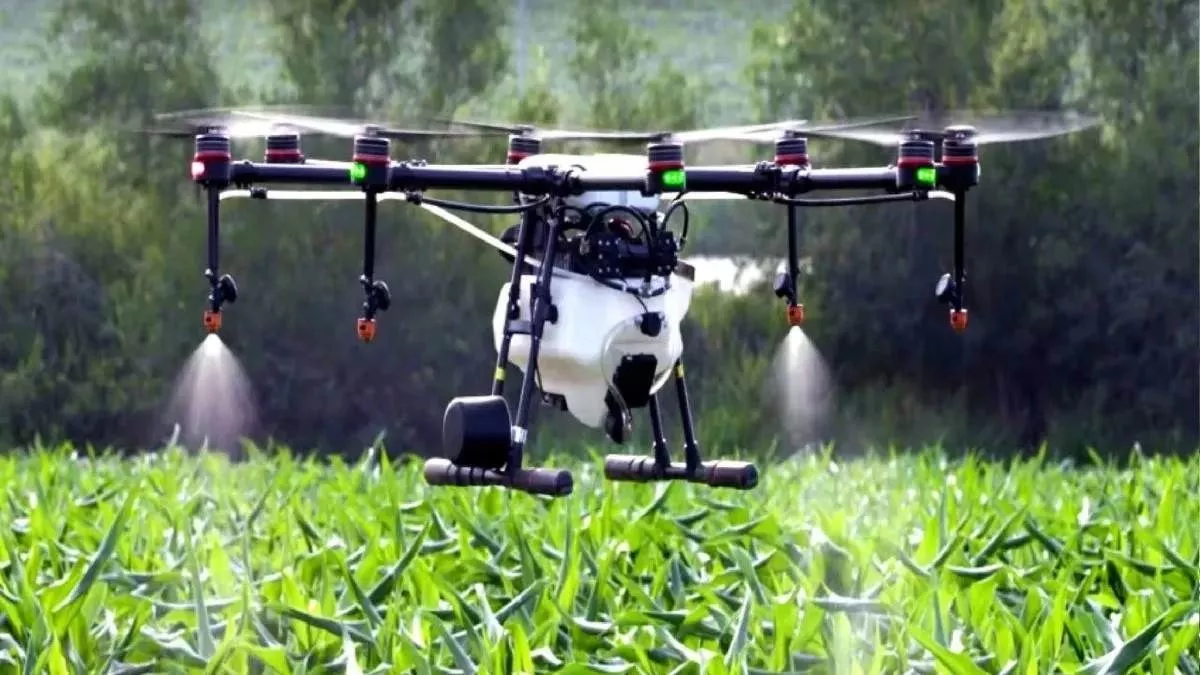Drone Agriculture: Whether it’s detecting diseases in standing crops, spraying pesticide nano urea, or accurately estimating soil quality and field yield, all these tasks are easily accomplished through drones. The increasing use of drone technology in agricultural schemes like Namo Drone Didi reduces agricultural costs and boosts yields.
Ramesh Kumar Sahni, a scientist at ICAR, CIAE, Bhopal, stated that drones are primarily used for spraying in India. Efforts are also underway to identify crop diseases through multispectral imaging, simplifying the process of identifying affected areas and potential crop diseases.
Additionally, drones enable accurate yield estimation by surveying crops, such as oranges or mangoes. Farmers can also assess the number of trees or plants immediately after sowing, identifying areas for replanting and optimizing crop spacing. With such capabilities, good production can be achieved even in small farming areas.
.jpg)
Cost and Labor Reduction
Drones cover more land in less time, reducing labor and costs. Nano urea spraying, for instance, streamlines operations, completing tasks in 30-35 minutes that typically took six to seven hours manually. The use of drones reduces labor by 70-80%, significantly benefiting farmers.
Drone Operation Protocols
ICAR is developing protocols for drone operations, including guidelines for altitude, speed, and flight patterns tailored to different crops. These protocols ensure effective spraying and minimize risks such as damage to plants or uneven chemical distribution.
Urea Spraying
Drones are increasingly used for urea broadcasting, significantly reducing the time and effort required compared to manual application. One acre of land can be covered in just 10 minutes, improving efficiency and productivity.
Training and Skill Development
Efforts are underway to train farmers in drone operations and skill development. Training programs cover various aspects of drone usage, including maintenance, safety precautions, and spray mixture preparation.
Civil Drone Utility
Drones are utilized for surveys, agriculture, logistics, and surveillance, facilitating soil quality assessment and crop monitoring. Automation and technology advancements enhance drone capabilities, making them indispensable tools for farmers.
Emphasis on New Technologies
Techniques and policies are being developed for Beyond Visual Range operations, improving signal and communication systems. The drone industry in India is expanding rapidly, with an estimated 10 lakh direct employment opportunities by 2030.
Drones are useful for every category of farmer
Marut Drone Co-founder and CEO Prem Kumar has informed that after the arrival of tractors, just as farming became comfortable and production increased immensely, similarly the use of drones has also started making a big difference. Just as tractors are being used for different tasks today, drones are also possible to use different types of agricultural work. Its spraying facility is spraying pesticides, urea. Urea, seeds or granulars can be easily sprayed on large scales.
If you look at the drone as a medium, then the tank under it can be used for different tasks. We have used drones in spraying, granular spreading, fumication, sowing, pollination and crop monitoring. Sowing and monitoring of plants in fields and gardens can now be automated. Many such things can be done with a single drone. Up to 30 acres of fields can be sprayed in a day.
At present, many farmers have started spraying 20-22 acres with drones. Mix nano urea up to 10 liters per acre is being sprayed. Currently, spaying works are done for 90 to 150 days in a year. Just as farmers use tractors throughout the year, the scope of use of drones can also be increased. Spraying activities can also extend up to 250 days. In the coming days, many other experiments will be seen for this.
With the help of many education-training institutes, farmers are being made aware of the use of drones. Farmers are also being trained in local languages like Tamil, Kannada, Hindi, Marathi. Farmers are informed about the modalities of drone operations in 10-15 days.
Often, 10 lakh tractors are sold in a year. While the demand for tractors increased in the last 15-20 years, the demand for drones is set to touch a new high only in the next five years. In the next five years, the demand for 3.65 lakh drones is estimated to reach India. It is going to be useful for large, medium and marginal farmers. Even if 1 per cent of large farmers and 4 per cent of medium farmers use drones, the demand for drones will be more than 18 lakh. At present, 15 thousand drones are being given under the Namo Drone Didi scheme. Similarly, work has started to promote the use of drones in almost every state.
